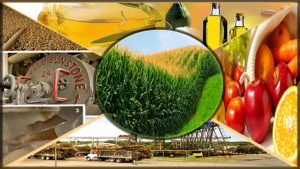The soil is said to be salt affected when there are more soluble salts are present as compared to CaCO3 and gypsum in soil this salt present in soil causes the yield reduction and effect of most crops. (FAO, 2010).”
Mostly in regions as arid and semi-arid soil affected by salts are common and it is estimated that about 10% soils are of such type of soils. A water a region is said to be arid when the availability of water is quitter low, mostly arid climate surrounds equator it is referenced with very little rainfall about 10-20 mm per inches. There are mostly short and scrubby vegetation in semi-arid regions, is named as semiarid region. Globally 6% of world soil is affected by salts either it is salinity of sodicity. It is about 400 million hectares of such type of soils (FAO 2010).
In Pakistan the total area of salt effected soils is situated in the plain of good canal system which is about 48 million acres. Estimated 0.45 million hectares are in Punjab, 0.94 million hectares in Sindh and 0.5 million hectares in NWFP out of 1.89 million hectares. Salt effected soils have enough quantity of salts which effect or interfere growth of plants. The pH of mostly salt effect soils extract is 8.5, electrical conductivity is more than 4 dS/m and exchangeable sodium percentage is more than 15. Saline Sodic Soil has enough exchangeable sodium to retard crop growth and also contains reasonable amount of soluble salts. Alkali soils have salts which are dominated by bicarbonates and have enough exchangeable Na to interfere physical growth of crops. The pH of alkali soils are more than 8.5, electrical conductivity is more than 4 and exchangeable sodium percentage is more than 15.
There are two kinds of salinity one is primary salinity which occurs due long time accumulation of salts through natural processes in surface soil or ground water. It is due to oceanic salts carried by wind which is said as cyclic salts it is about 6-50 milligram per kg of salts. And it decreases along with the increase in distance from costs. Other is secondary or human induced which is duce the activities of human. Human change the hydrological balance between water applied to crops and used by it. (Abrol et al., 1980).
It is seen that sodium has opposite effect on soil when the quantity of salts present are large it cause the dispersion of the soil and aggregate swelling. Clay dispersion occurs when soil is wetted and dried again and again it mostly converts it into very hard soils.
Three problems are there which are soil dispersion, infiltration and hydraulic conductivity occurs in salt affected soils. Primarily surface crusting causes physical dispersion and chemical dispersion which is due to salinity and sodicity. When the exchangeable sodium concentration is more than the soluble salts it forms more cations fixed with clay surface proportionally.Salts shows two types of phases one is quick yield reduction and other is internal injury and the effect is in two ways one is the effect outside the roots and other when plants takes up the salts.
The plants present in salt effected soils have spotty growth. For little salts barren spots and stunted plats can be observed. No of spots present on plants shows concentration of salts. If concentration of salts is high frequency of spots will be more and woody plants show more symptoms as compared with non woody. Osmotic stress, leaf growth reductions, and the stometal conductance are diminished in salt effected soils along with salts in soil. Salts retards growth and rate of new leaves formation but do not do inhibition directly.
Initially growth is affected by solute potential which is disturbed due to salts present in rhizosphere. For growing plants in salt affected soils we must apply water in enough quantity this may let the plants to uptake nutrients at initial stage.
Written by.
Athar Mahmood, Muhammad Umer Chattha, Faisal Nadeem, M.Umair and Muhammad Mahran Aslam








